Q
what is brake hold honda civic
The Brake Hold feature in Honda Civics sold here in Malaysia is actually a really handy driving aid. What it does is automatically maintain brake pressure once the car comes to a complete stop, so you don't have to keep your foot mashed on the brake pedal the whole time. It's a total lifesaver in stop-and-go city traffic or when you're stuck waiting at red lights. When it's active, you'll see an indicator light up on the dashboard. You can turn it on or off using the button on the center console, and just a light tap on the gas pedal releases the brakes so you can move again. Not only does this take some of the fatigue out of driving, but it also helps reduce the risk of accidental rollbacks if you get distracted for a second.
Important to note though: Brake Hold isn't the same as the Electronic Parking Brake (EPB). Brake Hold is for temporary stops, while EPB is meant for longer-term parking. Malaysia's rainy, humid weather makes these kinds of automated features even more useful, but it's still smart to stay alert behind the wheel. This is especially true when starting on hills – using Auto Hold there definitely adds an extra layer of safety. Keep in mind that the operation might vary slightly between different Civic model years, so it's always a good idea to check your owner's manual for the exact details on how it works in your specific car.
Special Disclaimer: This content is published by users and does not represent the views or position of PCauto.
Related Q&A
Q
How much does a 2022 Honda Civic battery cost?
The battery price for the 2022 Honda Civic in Malaysia ranges from approximately RM300 to RM600, depending on the model and battery brand. Original equipment (OEM) batteries usually cost a bit more, while third-party brands like Panasonic, Amaron, or Bosch might offer more budget-friendly options. The specific price is also influenced by battery capacity (such as specifications like 40B20L or 55D23L) and the warranty period. It's advisable for car owners to choose a battery that matches the original specifications when replacing it to ensure compatibility with the vehicle's electronic system. Additionally, consulting local authorized dealers or reputable auto repair shops is a good idea, as they often provide free installation and testing services. Furthermore, regularly checking the battery's health (such as voltage and electrolyte levels) and avoiding prolonged vehicle inactivity can help extend its lifespan. If you experience difficulty starting the car or notice dim headlights, these could be signs of a aging battery, and it should be replaced promptly to avoid the hassle of breaking down on the road.
Q
How many miles does a 2022 Civic last?
With proper maintenance and regular use, the 2022 Honda Civic typically has a lifespan of between 200,000 to 300,000 miles (approximately 320,000 to 480,000 kilometers). Of course, its actual lifespan depends on things like your driving style; how often you service it; and the road conditions you encounter. The Civic is well - known for its reliability and durability—even here in Malaysia's tropical climate. Stick to regular oil changes, inspect the cooling system regularly, and maintain proper tire pressure, and you’ll further extend its lifespan.
Malaysia’s roads can be varied too—congested city traffic and long highway stretches both cause different levels of wear and tear. That’s why I’d recommend servicing every 6 months or 5,000 to 10,000 kilometers. It’s the best way to keep critical parts like the engine and gearbox in top shape. If you’re really aiming to keep your Civic running for the long haul, choose high - quality engine oil and genuine parts. They might seem like small details, but trust me, they play a crucial role in maintaining the car's long - term performance.
All in all, the 2022 Honda Civic is a durable pick for the Malaysian market. With proper and regular maintenance, it can ensure years of reliable driving.
Q
Does the 2022 Honda Civic have any recalls?
As of 2022, there were indeed some recall records for the 2022 Honda Civic in the Malaysian market. The main issue was with the Airbag Control Unit (ACU) software, which could potentially prevent the airbags or seatbelt pretensioners from deploying properly in a collision. Honda Malaysia has notified affected owners through official channels to arrange for a free software update. Additionally, certain models might experience engine stalling due to a manufacturing defect in the fuel pump module, and Honda has proactively recalled these vehicles to replace the relevant components.
For Malaysian owners, it's advisable to check the specific recall status of your vehicle by entering the Vehicle Identification Number (VIN) on Honda's official website or by directly contacting an authorized service center to confirm. Recalls are a normal part of a car manufacturer's commitment to product responsibility, and Honda's prompt response demonstrates its dedication to safety.
Malaysian owners who notice any abnormalities with their vehicles, such as dashboard warning lights illuminating or a loss of power while driving, should contact after-sales service promptly. You can also proactively ask technicians about the latest recall information during regular maintenance to ensure your car is in optimal condition.
Q
How to pre-start a Honda Civic 2022?
To pre - start your 2022 Honda Civic, first make sure the key is within range—usually 1 - 2 meters. Press the unlock button to wake up the system; then quickly press the "Engine Start" button twice without stepping on the brake. This puts the car into "ACC mode," where the dashboard lights up partially but the engine stays off—perfect for operating the radio or the windows. If you need full power for a system check, just press the start button once more (still no brake) to switch to "ON mode."
Malaysia’s heat is no joke, so pro tip: when pre - starting, hold the unlock button for 3 seconds to turn on the air conditioning to ventilate the cabin. But avoid doing it frequently—frequent pre - starts can drain the battery. If the car’s been sitting a while, it's better to start the engine normally to let the battery recharge.
A note on the engine: The 2022 Civic’s 1.5T Earth Dreams engine uses direct injection. Unlike old carburetor cars, there's no need for the traditional "warm - up" process—the ECU adjusts fuel delivery automatically on cold starts. Just avoid idling for more than 3 minutes, or you may receive an environmental protection warning (thanks to JPJ’s idle emission rules here).
Rainy season? Pre - start becomes your best friend for pre - checking TPMS and wiper condition. However, note that Honda Sensing features only activate once the engine’s properly running.
Q
What kind of battery is in the Honda Civic 2022?
The 2022 Honda Civic in the Malaysian market comes equipped with a 12V maintenance-free lead-acid battery, typically either the wet-flooded type or AGM (Absorbent Glass Mat) variant. Specific specifications can vary depending on the trim level—for instance, the 1.5L turbocharged models might feature higher-performance batteries to support the start-stop system. These batteries boast strong vibration resistance and low self-discharge rates, making them well-suited for tropical climates. It's advisable to regularly check the terminal cleanliness and electrolyte levels (for wet batteries) to maximize lifespan.
For Malaysian drivers, the hot climate can accelerate battery degradation, so avoiding prolonged use of in-car electronics with the engine off and scheduling professional battery checks every 2-3 years are crucial. When replacement is needed, Honda recommends batteries meeting JIS or DIN standards, such as the 55B24L model (for certain variants). Reputable third-party options like Panasonic or Bosch with matching specifications are also viable, though compatibility should be verified.
Additionally, modern automotive electronics demand stable voltage supply—substandard batteries may trigger false sensor readings. For peace of mind and to preserve warranty coverage, having replacements done through authorized service centers is recommended.
Q
What is the battery problem in the Honda Civic 2022?
Based on owner feedback, the 2022 Honda Civic in Malaysia saw some battery-related complaints, mainly about batteries draining too quickly or failing prematurely. These issues are typically linked to accelerated battery sulfation in tropical climates. We recommend owners regularly check their battery health, especially if they mainly do short trips—frequent engine starts without enough charging time really takes a toll on battery life. If you notice sluggish starting or unusual power drain from electronics, get it checked out promptly.
It's worth noting modern cars have increasingly complex electrical systems; things like dashcams or connected car modules that draw power 24/7 can add extra load. Opting for high-performance batteries designed for tropical conditions, like AGM or EFB types, can seriously boost durability. Also, good habits help—remember to turn off the AC, stereo, and other high-power devices before switching off the engine. If you run into these problems, head to an authorized service center. They’ve got the right tools to test both battery condition and whether the vehicle’s charging system is working properly.
Q
How far does the auto start working on a Honda Civic 2022?
The effective operating range of the 2022 Honda Civic's auto-start functions—typically referring to remote start or the idle stop system—depends on the specific configuration and usage environment. For the remote start feature, in an unobstructed, open area, the maximum range is generally around 30 to 50 meters. However, the actual distance can be shorter due to surrounding obstacles like walls or other vehicles, or signal interference. In Malaysia's hot and humid climate, battery performance and ambient temperature might also slightly affect signal transmission.
As for the Idle Stop system, it has nothing to do with distance. This system automatically shuts off the engine when the vehicle is stationary (such as at red lights) to save fuel. To restart, simply release the brake or press the accelerator. It relies on the vehicle's sensors and battery condition, so regular battery maintenance is recommended to ensure stability.
Remote start is quite practical in Malaysia, allowing you to pre-cool the cabin by turning on the air conditioning. Just keep in mind that prolonged idling could increase carbon buildup risk. It's best to optimize your usage habits by referring to the owner's manual and consulting local dealers for advice.
Q
What are the defects of the 2022 Honda Civic?
The 2022 Honda Civic has put up a solid overall performance in the Malaysian market, but there are still a few minor hiccups that potential buyers should be aware of based on user feedback. For instance, some owners have mentioned that the cabin insulation feels a bit lacking at highway speeds, with tire noise being particularly noticeable. Additionally, the touchscreen on the center console can sometimes suffer from glare under strong sunlight, which might affect usability. While the 1.5-liter turbocharged engine delivers plenty of punch, it's worth noting that minor carbon buildup could occur after prolonged use, necessitating regular maintenance. It's important to add that these issues aren't widespread, and most can be mitigated with post-purchase upgrades—think adding extra sound deadening material or scheduling regular throttle body cleanings. Given Malaysia's hot and rainy climate, paying special attention to paintwork protection and air conditioning system maintenance is also advisable. Despite these nuances, the Civic remains a top pick in its segment thanks to its impressive fuel efficiency, comprehensive Honda Sensing safety suite, and spacious interior. Prospective buyers should definitely test drive the car to get a feel for these details firsthand, and Honda Malaysia's dealerships also offer comprehensive warranty packages to safeguard owners' interests.
Q
Does the 2022 Civic have a turbo?
The 2022 Honda Civic does come with a turbocharged engine in some trims. Specifically, in the Malaysian market, the Civic 1.5L VTEC Turbo variant packs a pretty efficient turbocharged powerplant. This engine delivers 173 horsepower and 220 Nm of torque, striking a nice balance between performance and fuel efficiency—perfect for local driving conditions. Turbo tech works by compressing the intake air to boost combustion efficiency, so you get plenty of torque even at low revs. That makes city driving or highway overtakes feel a lot more effortless.
Besides the turbo version, the Civic might also offer a naturally aspirated engine option, but you’ll want to check with local dealers for the exact specs. Turbo engines are getting more popular in Malaysia these days because they handle various road conditions well while keeping fuel consumption low. For Malaysian drivers who often deal with traffic jams, that’s a really practical choice.
If you’re thinking about getting the 2022 Civic, I’d recommend heading to an authorized dealer for a test drive. Experience the turbo engine for yourself, and make sure to ask about maintenance costs and warranty policies too. That way, you can make a decision that best fits your needs.
Q
Is a 2022 Honda Civic a good car?
The 2022 Honda Civic has been a standout performer in the Malaysian market, earning plenty of love for its impressive fuel efficiency, solid reliability, and sleek, modern design. Under the hood, you'll find a 1.5-liter turbocharged engine that serves up more than enough pep for city driving while keeping fuel costs in check – perfect for Malaysia's urban jungle. Step inside, and the Civic doesn't disappoint with its quality materials and a solid dose of tech. Think touchscreen infotainment and the Honda SENSING safety suite, which throws in handy features like adaptive cruise control and lane-keeping assist to make every drive safer and more convenient. On top of that, Honda's got a pretty decent after-sales network here, so getting it serviced isn't a hassle, adding even more appeal. If your budget's sitting between RM100k and RM150k, the 2022 Civic is definitely one to shortlist. It's a compact sedan that nails daily commuting duties, handles family outings with ease, and still manages to inject a bit of driving fun into the mix – practicality and pleasure rolled into one.
Latest Q&A
Q
How much does a 2022 Honda Civic battery cost?
The battery price for the 2022 Honda Civic in Malaysia ranges from approximately RM300 to RM600, depending on the model and battery brand. Original equipment (OEM) batteries usually cost a bit more, while third-party brands like Panasonic, Amaron, or Bosch might offer more budget-friendly options. The specific price is also influenced by battery capacity (such as specifications like 40B20L or 55D23L) and the warranty period. It's advisable for car owners to choose a battery that matches the original specifications when replacing it to ensure compatibility with the vehicle's electronic system. Additionally, consulting local authorized dealers or reputable auto repair shops is a good idea, as they often provide free installation and testing services. Furthermore, regularly checking the battery's health (such as voltage and electrolyte levels) and avoiding prolonged vehicle inactivity can help extend its lifespan. If you experience difficulty starting the car or notice dim headlights, these could be signs of a aging battery, and it should be replaced promptly to avoid the hassle of breaking down on the road.
Q
How many miles does a 2022 Civic last?
With proper maintenance and regular use, the 2022 Honda Civic typically has a lifespan of between 200,000 to 300,000 miles (approximately 320,000 to 480,000 kilometers). Of course, its actual lifespan depends on things like your driving style; how often you service it; and the road conditions you encounter. The Civic is well - known for its reliability and durability—even here in Malaysia's tropical climate. Stick to regular oil changes, inspect the cooling system regularly, and maintain proper tire pressure, and you’ll further extend its lifespan.
Malaysia’s roads can be varied too—congested city traffic and long highway stretches both cause different levels of wear and tear. That’s why I’d recommend servicing every 6 months or 5,000 to 10,000 kilometers. It’s the best way to keep critical parts like the engine and gearbox in top shape. If you’re really aiming to keep your Civic running for the long haul, choose high - quality engine oil and genuine parts. They might seem like small details, but trust me, they play a crucial role in maintaining the car's long - term performance.
All in all, the 2022 Honda Civic is a durable pick for the Malaysian market. With proper and regular maintenance, it can ensure years of reliable driving.
Q
Does the 2022 Honda Civic have any recalls?
As of 2022, there were indeed some recall records for the 2022 Honda Civic in the Malaysian market. The main issue was with the Airbag Control Unit (ACU) software, which could potentially prevent the airbags or seatbelt pretensioners from deploying properly in a collision. Honda Malaysia has notified affected owners through official channels to arrange for a free software update. Additionally, certain models might experience engine stalling due to a manufacturing defect in the fuel pump module, and Honda has proactively recalled these vehicles to replace the relevant components.
For Malaysian owners, it's advisable to check the specific recall status of your vehicle by entering the Vehicle Identification Number (VIN) on Honda's official website or by directly contacting an authorized service center to confirm. Recalls are a normal part of a car manufacturer's commitment to product responsibility, and Honda's prompt response demonstrates its dedication to safety.
Malaysian owners who notice any abnormalities with their vehicles, such as dashboard warning lights illuminating or a loss of power while driving, should contact after-sales service promptly. You can also proactively ask technicians about the latest recall information during regular maintenance to ensure your car is in optimal condition.
Q
How to pre-start a Honda Civic 2022?
To pre - start your 2022 Honda Civic, first make sure the key is within range—usually 1 - 2 meters. Press the unlock button to wake up the system; then quickly press the "Engine Start" button twice without stepping on the brake. This puts the car into "ACC mode," where the dashboard lights up partially but the engine stays off—perfect for operating the radio or the windows. If you need full power for a system check, just press the start button once more (still no brake) to switch to "ON mode."
Malaysia’s heat is no joke, so pro tip: when pre - starting, hold the unlock button for 3 seconds to turn on the air conditioning to ventilate the cabin. But avoid doing it frequently—frequent pre - starts can drain the battery. If the car’s been sitting a while, it's better to start the engine normally to let the battery recharge.
A note on the engine: The 2022 Civic’s 1.5T Earth Dreams engine uses direct injection. Unlike old carburetor cars, there's no need for the traditional "warm - up" process—the ECU adjusts fuel delivery automatically on cold starts. Just avoid idling for more than 3 minutes, or you may receive an environmental protection warning (thanks to JPJ’s idle emission rules here).
Rainy season? Pre - start becomes your best friend for pre - checking TPMS and wiper condition. However, note that Honda Sensing features only activate once the engine’s properly running.
Q
What kind of battery is in the Honda Civic 2022?
The 2022 Honda Civic in the Malaysian market comes equipped with a 12V maintenance-free lead-acid battery, typically either the wet-flooded type or AGM (Absorbent Glass Mat) variant. Specific specifications can vary depending on the trim level—for instance, the 1.5L turbocharged models might feature higher-performance batteries to support the start-stop system. These batteries boast strong vibration resistance and low self-discharge rates, making them well-suited for tropical climates. It's advisable to regularly check the terminal cleanliness and electrolyte levels (for wet batteries) to maximize lifespan.
For Malaysian drivers, the hot climate can accelerate battery degradation, so avoiding prolonged use of in-car electronics with the engine off and scheduling professional battery checks every 2-3 years are crucial. When replacement is needed, Honda recommends batteries meeting JIS or DIN standards, such as the 55B24L model (for certain variants). Reputable third-party options like Panasonic or Bosch with matching specifications are also viable, though compatibility should be verified.
Additionally, modern automotive electronics demand stable voltage supply—substandard batteries may trigger false sensor readings. For peace of mind and to preserve warranty coverage, having replacements done through authorized service centers is recommended.
View MoreRelated News
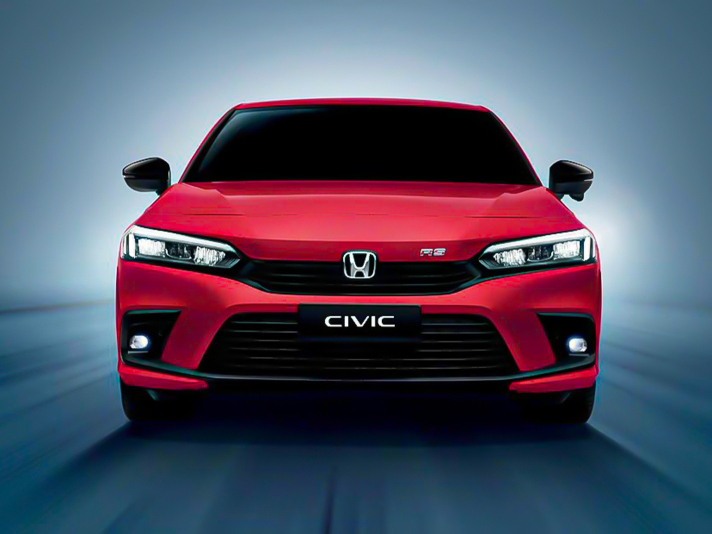
Honda Civic Interior Revealed: A Comprehensive Analysis of Civic’s Interior Charm
Kevin WongJul 10, 2025
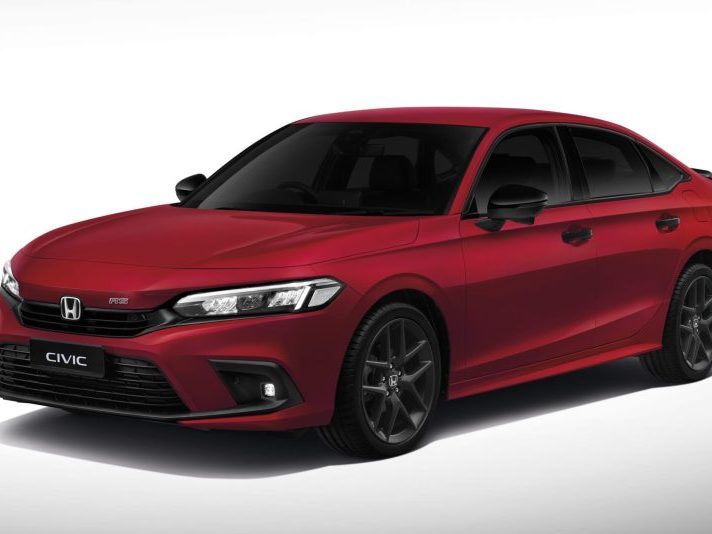
Honda Civic Price Revealed: The Most Detailed Buying Guide!
AshleyApr 8, 2025
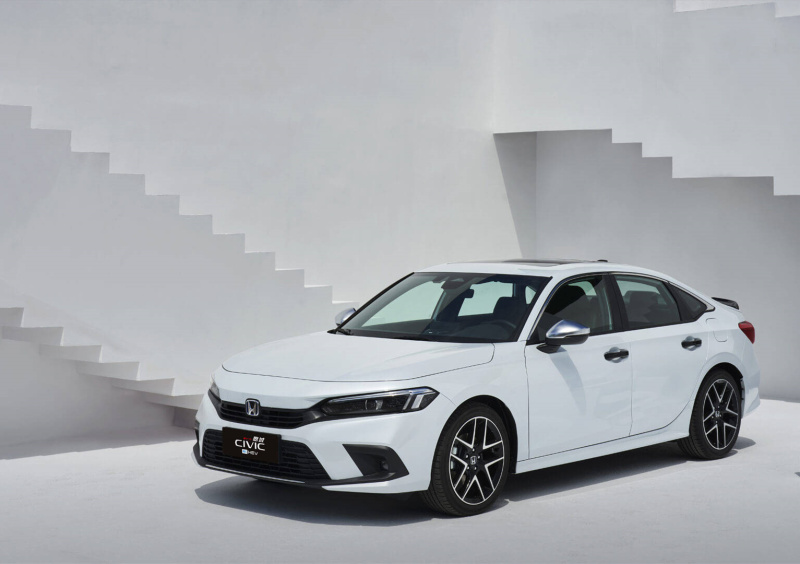
Whether it's about appearance or handling, why do young people all like Honda Civic?
WilliamSep 24, 2024
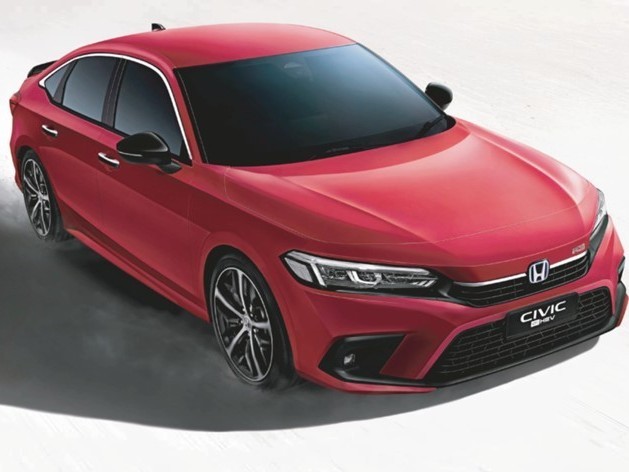
2022 Honda Civic: Hybrid car with the fastest acceleration, lowest fuel consumption, who says eco-friendly cannot be fast
JohnSep 3, 2024
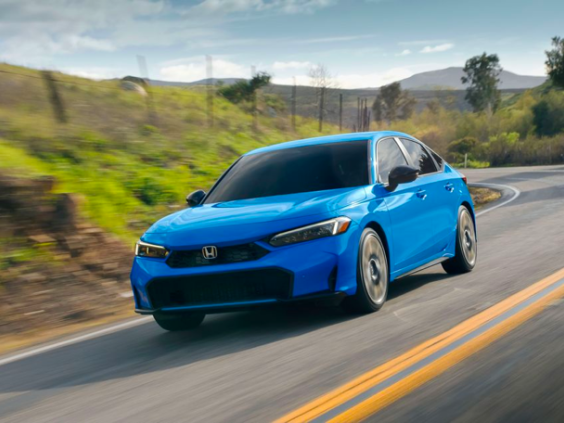
2025 Honda Civic debuts, minor changes in appearance, has 1.5 Turbo model been discontinued?
LienMay 22, 2024
View More











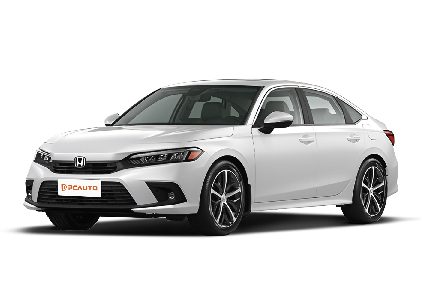
 Cars
Cars
Pros
Cons